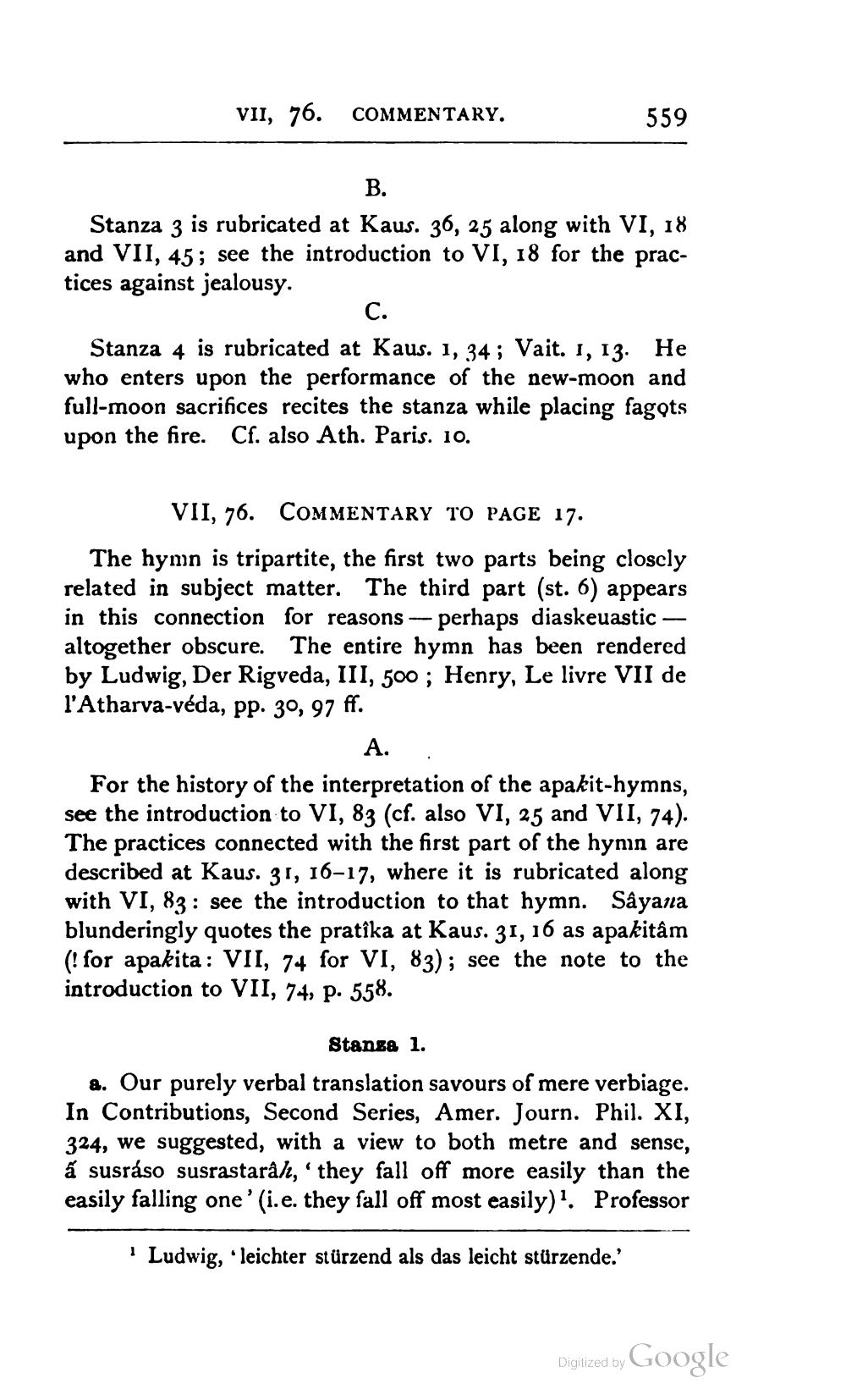________________
VII, 76. COMMENTARY.
559
Stanza 3 is rubricated at Kaus. 36, 25 along with VI, 18 and VII, 45; see the introduction to VI, 18 for the practices against jealousy.
Stanza 4 is rubricated at Kaus. 1, 34 ; Vait. 1, 13. He who enters upon the performance of the new-moon and full-moon sacrifices recites the stanza while placing fagots upon the fire. Cf. also Ath. Paris. 10.
VII, 76. COMMENTARY TO PAGE 17. The hymn is tripartite, the first two parts being closcly related in subject matter. The third part (st. 6) appears in this connection for reasons - perhaps diaskeuastic — altogether obscure. The entire hymn has been rendered by Ludwig, Der Rigveda, III, 500 ; Henry, Le livre VII de l'Atharva-véda, pp. 30, 97 ff.
A.
For the history of the interpretation of the apakit-hymns, see the introduction to VI, 83 (cf. also VI, 25 and VII, 74). The practices connected with the first part of the hynin are described at Kaus. 31, 16-17, where it is rubricated along with VI, 83: see the introduction to that hymn. Sâyana blunderingly quotes the pratîka at Kaus. 31, 16 as apakitâm (! for apakita : VII, 74 for VI, 83); see the note to the introduction to VII, 74, p. 558.
Stanse 1.
8. Our purely verbal translation savours of mere verbiage. In Contributions, Second Series, Amer. Journ. Phil. XI, 324, we suggested, with a view to both metre and sense, á susráso susrastarâh, they fall off more easily than the easily falling one'(i.e. they fall off most easily)'. Professor
Ludwig, leichter stürzend als das leicht stürzende.'
Digitized by Google




